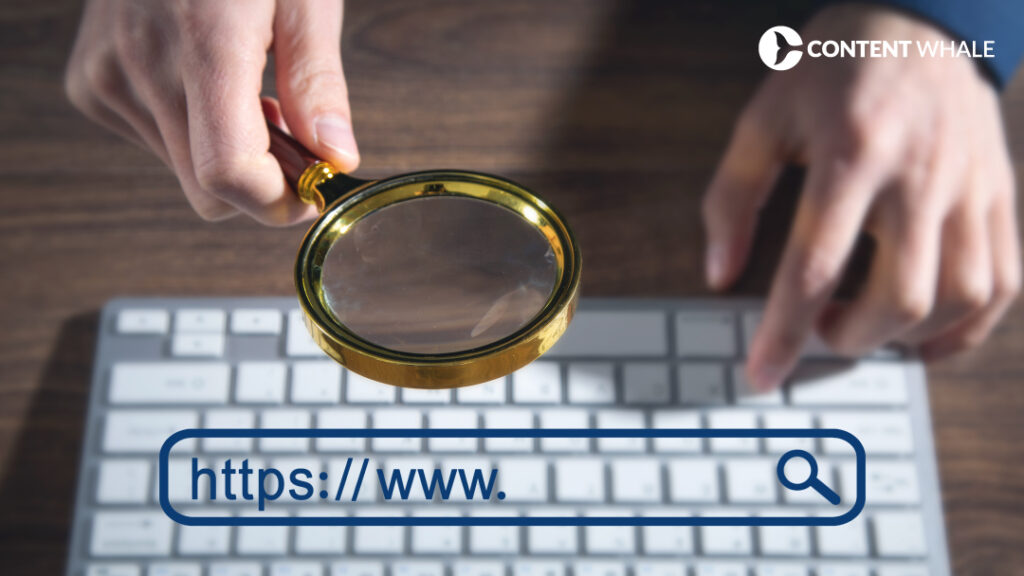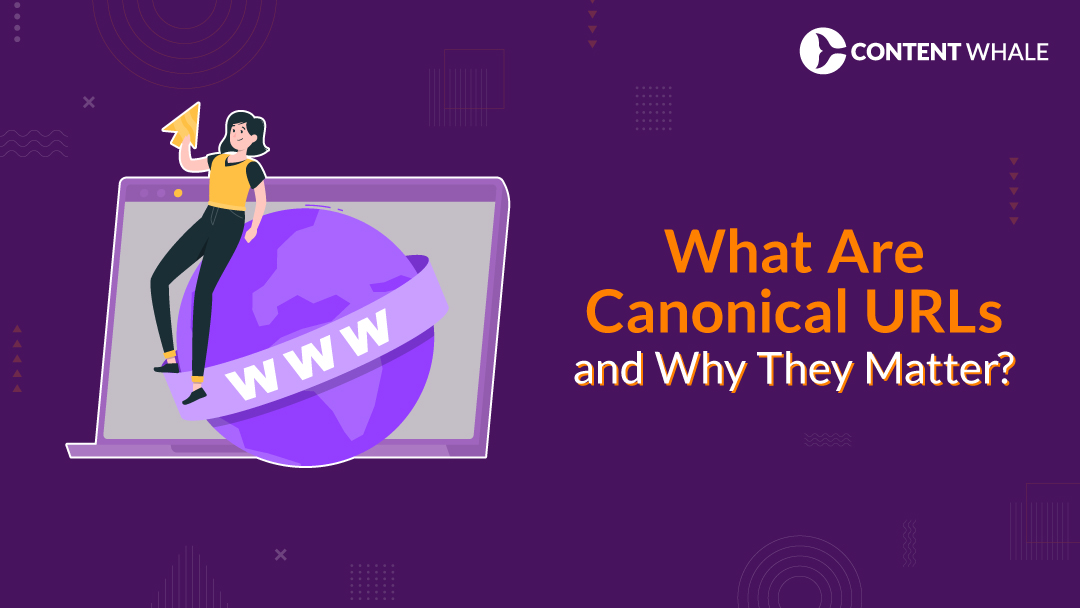Canonical URLs are a key element in maintaining a clean and effective SEO strategy. They serve as a guide for search engines, indicating which version of a URL should be treated as the primary one.
This is particularly important when you have multiple pages with similar or identical content, as it helps prevent duplicate content issues that can harm your website’s ranking in search results.
By properly using canonical URLs, you ensure that search engines understand which pages to prioritize, making your site easier to crawl and improving your overall visibility online.
What Are Canonical URLs?
Canonical URLs are essentially the preferred version of a web page that you want search engines to index and rank. In technical terms, a canonical URL is specified using a canonical tag (<link rel=”canonical”>) within the HTML of a webpage. This tag helps search engines identify the main URL among several duplicates or similar pages.
For example, if the same content is accessible through different URLs due to tracking parameters or different navigation paths, the canonical URL tells search engines which one to consider as the primary version. This practice is crucial in SEO because it consolidates link equity, preventing dilution and ensuring that the most important version of the content is recognized by search engines.
Here are some examples of how canonical URLs might be implemented:
| Page URL | Canonical URL |
| https://example.com/page?utm_source=newsletter | https://example.com/page |
| https://example.com/page?id=123 | https://example.com/page |
| https://example.com/page/ | https://example.com/page |
| https://example.com/page.html | https://example.com/page |
| https://www.example.com/page | https://example.com/page |
By implementing canonical URLs, you help search engines focus on the content that matters most, which can significantly improve your site’s SEO performance. This approach to URL management is essential for avoiding penalties related to duplicate content and ensuring that your search engine optimization efforts are not undermined by technical issues.
Hence, canonical URLs are an integral part of URL management and SEO, playing a crucial role in how your content is indexed and ranked by search engines.
Why Are Canonical URLs Important for SEO?
Canonical URLs are critical for effective search engine optimization (SEO) because they address one of the most common issues faced by website owners: duplicate content. When search engines encounter multiple pages with similar or identical content, they may struggle to determine which version to index and rank. This confusion can dilute your site’s visibility and lead to poor search engine rankings. Canonical URLs provide a solution by signaling to search engines which URL should be treated as the primary source, thus avoiding the negative impact of duplicate content.
Here’s why canonical URLs are so important for SEO:
1. Managing Duplicate Content
Canonical URL tags are essential in preventing duplicate content issues. They ensure that search engines understand which version of a page is the preferred one, consolidating link equity and avoiding penalties. By properly implementing canonical tags, you can manage duplicate content effectively, which is crucial for maintaining a strong SEO strategy.
2. Impact on Search Engine Rankings
When duplicate content is present, search engines might split the ranking power among the duplicates, weakening the overall impact. Using canonical URLs ensures that all the ranking signals point to a single, preferred URL, thereby enhancing its chances of ranking higher in search results. This aspect of URL management is vital for maintaining and improving your site’s SEO performance.
3. Benefits for Site Indexing and Crawl Efficiency
Canonical URLs help search engines index your site more efficiently. By directing crawlers to the correct version of a page, you improve crawl efficiency, allowing search engines to focus on your most important content. This efficient use of crawl budget leads to better indexing of your site, which is a significant advantage in search engine optimization.
So, canonical URLs are not just a tool for managing URLs—they are a fundamental component of SEO. By consolidating duplicate content, enhancing search engine rankings, and improving site indexing, canonical URLs contribute to a healthier and more effective SEO strategy. Implementing them correctly should be a priority for any website looking to optimize its presence in search engine results.
How to Implement Canonical URLs

Implementing canonical URLs is a straightforward process, but it’s essential to do it correctly to maximize the benefits for SEO. Whether you’re using a content management system (CMS) like WordPress or Shopify, or managing a custom-built site, following best practices for adding canonical tags can prevent duplicate content issues and improve your site’s search engine rankings. Here’s a step-by-step guide on how to implement canonical URLs:
Step-by-Step Guide on Adding Canonical Tags
- Identify Duplicate Content: Begin by identifying pages with similar or duplicate content. Use SEO tools like Google Search Console or Screaming Frog to find these pages.
- Add Canonical Tags: Once you’ve identified duplicate content, add the <link rel=”canonical” href=”https://your-preferred-url.com/”> tag to the HTML <head> section of the page. This tag should point to the primary version of the content you want search engines to index.
- Verify Implementation: After adding canonical tags, verify that they are correctly implemented by checking the page’s source code. Tools like Moz or Ahrefs can also be used to confirm that your canonical URLs are set up properly.
Best Practices for Different CMS
- WordPress: Use SEO plugins like Yoast SEO or All in One SEO Pack to manage canonical tags easily. These plugins automatically add canonical URLs to your pages, but you can also customize them if needed.
- Shopify: Shopify automatically adds canonical tags to product pages, but you can override these by manually adding a canonical URL in the theme’s code if necessary.
- Joomla: Joomla users can add canonical tags either manually or by using extensions like sh404SEF, which simplifies the process of managing canonical URLs.
Common Mistakes to Avoid
- Incorrect Canonical Tags: Avoid pointing canonical tags to irrelevant or incorrect URLs. Ensure that each canonical tag accurately reflects the primary content you want indexed.
- Mixing Canonical Tags with 301 Redirects: Do not use both a canonical tag and a 301 redirect on the same URL, as this can confuse search engines and undermine your SEO efforts.
- Ignoring HTTPS: Ensure that your canonical URLs use the correct protocol (HTTP or HTTPS). If your site is secure, all canonical tags should point to the HTTPS version of the URL.
- Overlooking Dynamic Parameters: Be careful with pages that have dynamic parameters (e.g., ?utm_source=newsletter). Always set the canonical URL to the clean, parameter-free version of the page.
Implementing canonical URLs correctly is a fundamental aspect of SEO and URL management. By following these steps and adhering to best practices, you can ensure that your site is optimized for search engines, reducing the risks associated with duplicate content and improving your overall SEO performance.
Canonical URLs vs. 301 Redirects
Understanding the differences between canonical URLs and 301 redirects is crucial for effective URL management and SEO. Both methods are used to handle duplicate content and direct search engines to the correct version of a webpage, but they serve different purposes and have unique implications for search engine optimization.
Differences Between Canonical URLs and 301 Redirects
| Aspect | Canonical URL | 301 Redirect |
| Function | Points to the preferred version of a page | Redirects traffic from one URL to another |
| URL Management | Used to manage duplicate content without removing pages | Used to permanently redirect to a new URL |
| Impact on SEO | Consolidates link equity and avoids duplicate content penalties | Transfers link equity to the new URL and removes the old URL from search indexes |
| Implementation | <link rel=”canonical” href=”URL”> in HTML <head> | HTTP 301 status code in the server configuration |
When to Use Canonical URLs
- Managing Duplicate Content: Use canonical URLs when you have multiple pages with similar content. The canonical tag allows search engines to understand which page should be considered the primary source without removing any pages.
- URL Consolidation: Canonical URLs are ideal for consolidating link equity from multiple similar pages to a single preferred page, which is crucial for effective URL management and search engine optimization.
- Parameter Handling: If your website generates URLs with tracking parameters or session IDs, canonical URLs help point search engines to the clean, parameter-free version of the URL.
When to Use 301 Redirects
- Permanent Page Moves: Use a 301 redirect when a page has been permanently moved to a new URL. This ensures that users and search engines are directed to the correct page and that link equity is transferred to the new URL.
- Consolidating Content: If you’re consolidating several pages into one, a 301 redirect is the best option. This method removes the old pages from search engine indexes and redirects traffic to the new, consolidated page.
- Fixing Broken Links: When a page is deleted or its URL changes, implementing a 301 redirect helps maintain the link equity from the old URL and prevents users from encountering a 404 error.
Advantages and Disadvantages
| Sr | Canonical URL | 301 Redirect |
| Advantages | Advantages | |
| 1 | Helps manage duplicate content without removing pages | Permanently redirects traffic and transfers link equity |
| 2 | Maintains the user experience by keeping similar content accessible | Eliminates duplicate content issues by consolidating URLs |
| 3 | Improves SEO by focusing link equity on a single preferred URL | Ensures search engines index the correct page after URL changes |
| Disadvantages | Disadvantages | |
| 1 | Requires careful implementation to avoid misconfigured tags | Removes old URLs from search engine indexes, which may affect some backlinks |
| 2 | May not be effective if duplicate content exists across different domains | Not suitable for managing similar content on different pages |
| 3 | Can be complex to manage across large sites with many similar pages | Must be implemented at the server level, which might require technical expertise |
Therefore, while both canonical URLs and 301 redirects are powerful tools for SEO and URL management, they should be used in different scenarios.
Canonical URLs are best suited for managing duplicate content within the same domain, while 301 redirects are ideal for permanently moving content and ensuring that link equity is transferred to the new URL.
Understanding when and how to use each method is crucial for maintaining a healthy SEO strategy and avoiding potential issues related to duplicate content and broken links.
Troubleshooting Common Canonical URL Issues
Even with careful implementation, issues with canonical URLs can arise, potentially impacting your site’s SEO. Troubleshooting these problems is essential to ensure that your canonical tags are functioning correctly and that your website remains optimized for search engines. Here’s how to identify and resolve common canonical URL issues.
How to Identify Canonical URL Issues
- Check for Duplicate Content: Use SEO tools like Google Search Console or Screaming Frog to scan your site for duplicate content. These tools can help you identify pages that might require canonical URLs to avoid diluting your SEO efforts.
- Audit Canonical Tags: Regularly audit your website’s canonical tags using tools like Ahrefs or Moz. Ensure that each page has the correct canonical URL pointing to the preferred version of the content.
- Inspect HTTP Headers: Sometimes, canonical URLs might be implemented incorrectly due to misconfigurations in the HTTP headers. Use a tool like Screaming Frog to inspect your HTTP headers and ensure that the canonical URL is being sent correctly.
Tools for Checking Canonical Tags
| Tool | Description |
| Google Search Console | Provides reports on duplicate content and canonical tag issues |
| Screaming Frog | Crawls your site to identify canonical URL implementations and issues |
| Ahrefs | Offers a site audit feature to check for duplicate content and canonical tag problems |
| Moz Pro | Includes a comprehensive site audit tool that checks for canonical issues |
| SEMrush | Analyzes your website for SEO issues, including canonical tag misconfigurations |
Solutions to Fix Common Canonical URL Problems
- Misconfigured Canonical Tags: If your canonical tags are pointing to the wrong URL, update the <link rel=”canonical” href=”URL”> in the HTML <head> section to ensure it points to the correct, preferred version of the page.
- Multiple Canonical Tags: Ensure that each page only has one canonical tag. Multiple canonical tags can confuse search engines, leading to indexing issues. Remove any redundant canonical tags to maintain clear guidance for search engines.
- Mixed Signals with 301 Redirects: Avoid using canonical tags and 301 redirects on the same page. Decide whether to use a canonical URL or a 301 redirect based on the situation—canonical tags for duplicate content management and 301 redirects for permanent URL changes.
- Incorrect Protocol in Canonical Tags: Make sure that the canonical URL uses the correct protocol (HTTP or HTTPS). If your site uses HTTPS, all canonical tags should reflect this by pointing to the HTTPS version of the URL.
- Handling Dynamic URLs: For pages with dynamic parameters, ensure that the canonical tag points to the clean, parameter-free version of the URL. This prevents search engines from indexing multiple versions of the same page.
By actively troubleshooting and resolving these common canonical URL issues, you can ensure that your website remains optimized for SEO.
Proper canonical URL management helps maintain the integrity of your content in search engine results, avoids penalties related to duplicate content, and improves overall site performance in search engine rankings.
Regular audits and proactive management of canonical tags are essential practices for any website focused on effective search engine optimization.
Conclusion

Canonical URLs play a vital role in maintaining a strong and effective SEO strategy. By guiding search engines to the preferred version of a webpage, canonical URLs help manage duplicate content, consolidate link equity, and improve your site’s overall visibility in search results.
Properly implementing and managing canonical tags is essential for ensuring that your content is indexed and ranked correctly, avoiding penalties associated with duplicate content.
Understanding the difference between canonical URLs and 301 redirects is also crucial for effective URL management. While canonical URLs are perfect for handling duplicate content within the same domain, 301 redirects are better suited for permanently moving content to a new URL.
Both methods have their unique advantages and should be used appropriately to maintain the health of your SEO strategy.
Regularly auditing your site for canonical URL issues and using tools like Google Search Console, Screaming Frog, and Ahrefs will help you identify and resolve any potential problems.
By following best practices and avoiding common mistakes, you can ensure that your canonical URLs are functioning as intended, helping to boost your site’s search engine rankings and overall SEO performance.
So, today, canonical URLs are more than just a technical detail—they are a fundamental component of search engine optimization.
Proper URL management through the use of canonical tags ensures that your content is recognized, indexed, and ranked effectively by search engines, contributing to a healthier and more successful online presence.
FAQs
What happens if I don’t use canonical URLs?
If you don’t implement canonical URLs, search engines might index multiple versions of the same content across different URLs, leading to duplicate content issues. This can dilute link equity and negatively impact your site’s SEO.
Without canonical URLs, your website may struggle with poor search engine rankings due to the confusion caused by duplicate content. Canonical URLs are essential for managing duplicate content and ensuring that search engines focus on the preferred version of your pages.
Can I have multiple canonical URLs on a single page?
No, a single page should have only one canonical URL. Having multiple canonical URLs on the same page can confuse search engines, leading to indexing and ranking issues.
The canonical URL tag should point to the most authoritative version of the page to ensure proper search engine optimization. By using a single canonical URL, you consolidate link equity and avoid the pitfalls of duplicate content, which can otherwise harm your SEO efforts.
How do canonical URLs affect my site’s SEO?
Canonical URLs are crucial for effective SEO because they help manage duplicate content, which is a common issue in search engine optimization. By pointing search engines to the preferred version of a webpage, canonical URLs ensure that link equity is not split among multiple pages.
This consolidation boosts your site’s ranking potential and improves crawl efficiency. Properly implemented canonical URLs contribute to a healthier SEO profile by focusing search engine attention on the most relevant and important content on your site.
What tools can I use to check for canonical URL issues?
Several tools can help you identify and resolve canonical URL issues, ensuring your SEO efforts are on track. Google Search Console is a valuable resource for monitoring duplicate content and canonical tags.
Screaming Frog is another excellent tool for auditing your site’s canonical URLs and detecting misconfigurations. Other tools like Ahrefs, Moz Pro, and SEMrush also provide comprehensive SEO audits that include checks for canonical URL issues, helping you maintain optimal URL management and search engine optimization.
Can canonical URLs prevent all duplicate content issues?
While canonical URLs are highly effective at managing duplicate content within a domain, they may not prevent all duplicate content issues, especially if duplicates exist across different domains.
Canonical URLs guide search engines on which page to prioritize, but regular audits and proper implementation are still necessary. For complete duplicate content management, combine canonical URLs with other SEO practices like 301 redirects and consistent content structure to ensure that your site remains optimized for search engines.





